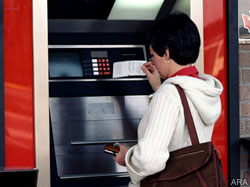
(ARA) – If you’re tired of getting nickeled and dimed by your bank, it’s time to switch. Irritation with unnecessary fees is the No. 1 reason consumers switch banks, according to a recent survey by Javelin Strategy and Research.
“Stopping useless fees forever is a smart way to make your money go further,” says J.J. Montanaro, a certified financial planner with USAA. “The savings can add up to hundreds of dollars a year, which can be used to pay your bills instead of your bank.”
To get a grip on what fees your bank is charging, Montanaro suggests carefully reviewing your most recent checking and savings account statement.
If you’re paying these five fees, it’s time to look for a bank that doesn’t charge them.
1. Overdraft fees
While the new overdraft rules that went into effect on July 1 requires financial institutions to notify customers of their options to opt-in to overdraft fees, finding a bank that chooses to opt-out of the “opt-in” legislation can save you cash. Some banks – like USAA Federal Savings Bank – have eliminated overdraft fees on ATM and debit transactions entirely.
However, if you’ve decided to opt-in to overdraft fees, you’re not out of luck. Many banks provide overdraft protection – allowing purchases exceeding your account balance to be pulled from your savings account or put on your credit card. Check with your bank to see if this service is free. If so you’ll avoid overdrafts and avoid having your purchase declined.
If you choose a credit card as your back-up payment option, be sure to pay off your balance immediately to avoid paying interest, Montanaro adds.
2. ATM fees
If the ATM you use is not affiliated with your bank, that ATM’s bank may charge you for ATM/debit card withdrawals or other transactions. While a $1.50 to $3 ATM fees may seem nominal when you really need to access your cash, they can add up quickly.
Some banks allow you to use any ATM without charging fees. If your bank doesn’t, plan ahead and only withdraw money from ATMs affiliated with your bank. Or you could take advantage of fee-free, cash-back options now offered at some local grocery or convenience store chains when making a purchase.
Better yet, switch to a bank that reimburses you those fees. For example, USAA rebates up to $15 a month in ATM fees – a perk that could add up to $180 a year in savings.
3. Check fees
Cut fees by quitting checks, or at least using less of them. Unless your bank offers free checks, switch to paying bills electronically. This usually fee-free service allows you to pay bills anytime and anywhere you have access to a secure Internet connection.
4. Minimum balance fees
Your bank may expect you to keep a minimum balance in your account and charge you a fee if you slip below. You can side-step these fees by carefully matching your situation with the account requirements. For instance, look for an account that waives the fee for direct deposit of your paycheck, or find an account with no minimum balance requirement.
“In addition, take advantage of helpful tools such as free online financial management tools, account alerts sent via e-mail or text messages that are triggered when your account runs low,” Montanaro says.
5. Fine print fees
Are you charged a fee for monthly account maintenance, or does that bill you receive in the mail each month cost extra? “It pays to sweat the small stuff and fully understand what your bank is charging you,” Montanaro says. “Instead of paying your bank to send you a paper bill each month, see if you can sign up to receive it electronically for free. This option will save you money and can make it easier to keep track of your statements.”
Montanaro adds that investing time to manage banking needs and find a bank that doesn’t overwhelm you with fees can add up to real savings of potentially hundreds of dollars each year. “In times like these, it’s important to make every dollar count and ensure it’s working for you – not your bank.”
Courtesy of ARAcontent





